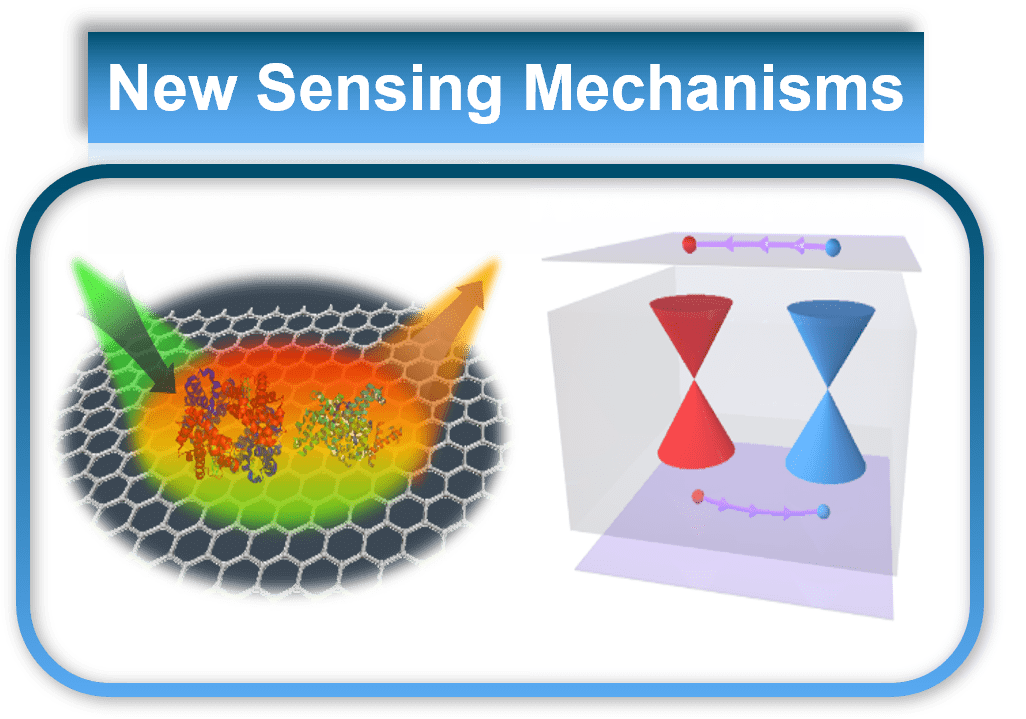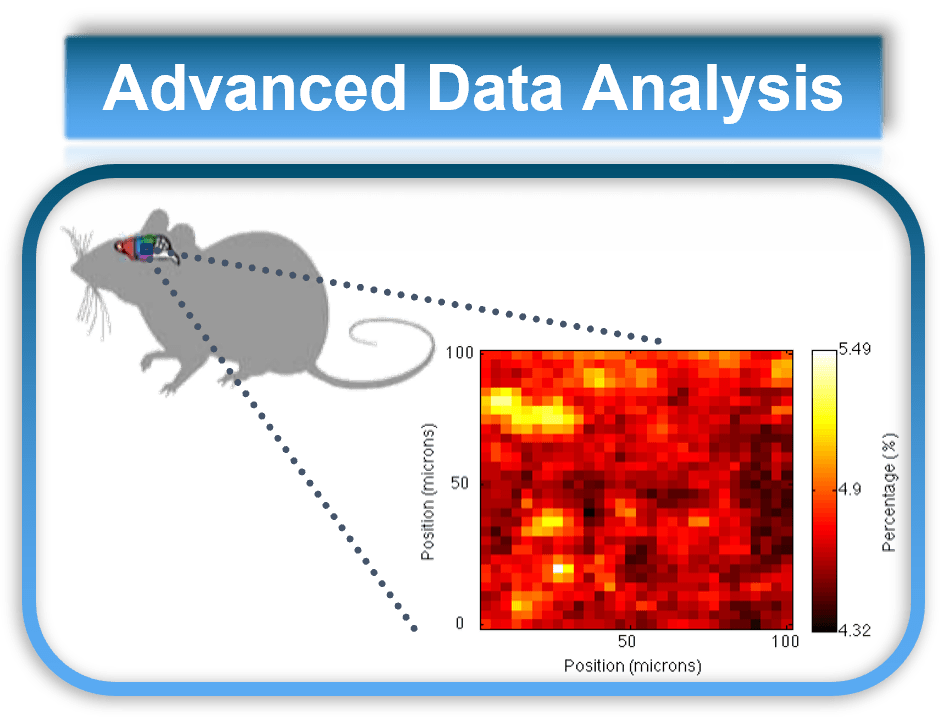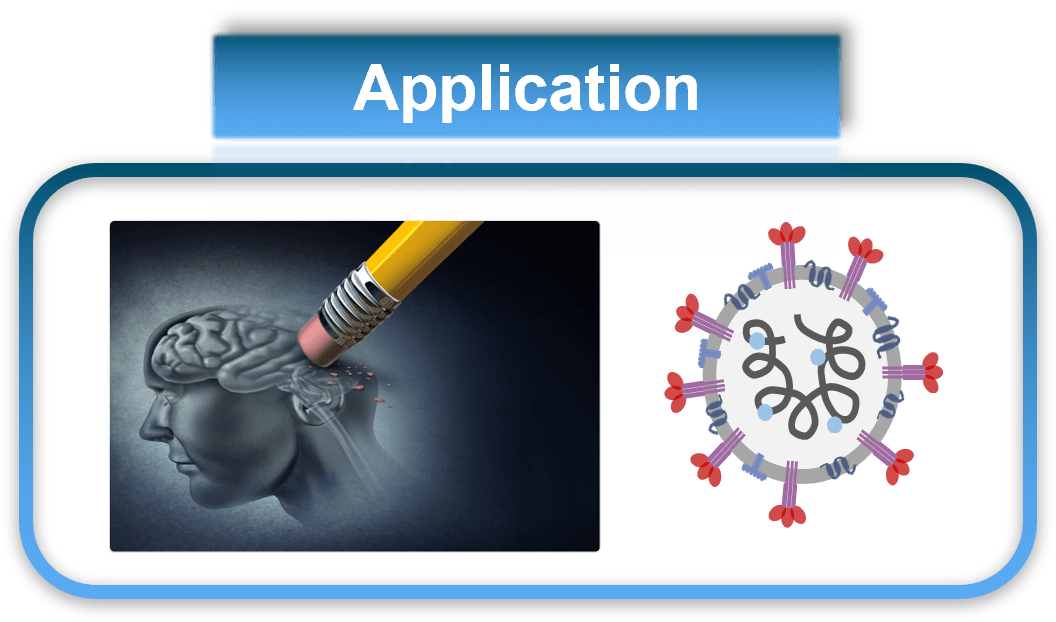
We develop nano and quantum materials with desired properties through innovative processing techniques. Examples of materials include 2D materials, Janus monolayer structures, moiré superlattice, 1D nanoscrolls, Weyl semimetals, and atomic defects. We develop fundamental understanding of these materials and explore their novel optical/electronic properties.

We develop novel sensing mechanisms, to achieve high-sensitivity, high-specificity, and high-multiplexity sensing platforms. In particular, we have made significant contributions to a technique called Raman enhancement through 2D materials (RE2D). Raman spectroscopy measures the spectrum of light scattering and offers fingerprints for molecules. While Raman signals are typically weak, 2D materials can be used as substrates to significantly enhance Raman signals of analyte molecules, hence RE2D.

The high-quality and vast data from our material characterization and sensing platforms, combined with advanced data analysis techniques such as machine learning, will have revolutionary impacts on materials science, health monitoring, and disease prediction. We use machine learning to build predictive models from training dataset collected, for problems such as predicting material properties, spectral analysis, trace molecule detection, and molecular structure analysis.

With the development of new sensing mechanisms, material platforms, and algorithms, we build integrated devices and systems for applications including virus detection and analysis (including influenza and SARS-CoV-2), and understanding of Alzheimer’s disease.
